Recovery, in the minds of gravel riders and other physically active individuals, is the pause between rides - a quiet interval before the next challenge. In truth however, recovery is not a break, it’s the most essential phase in the cycle of progress. If training is the stimulus, recovery is the gateway to adaptation and lasting performance gains. In the latest in his series of articles, Matt Hart, who owns TORQ, is looking into the science of recovery.
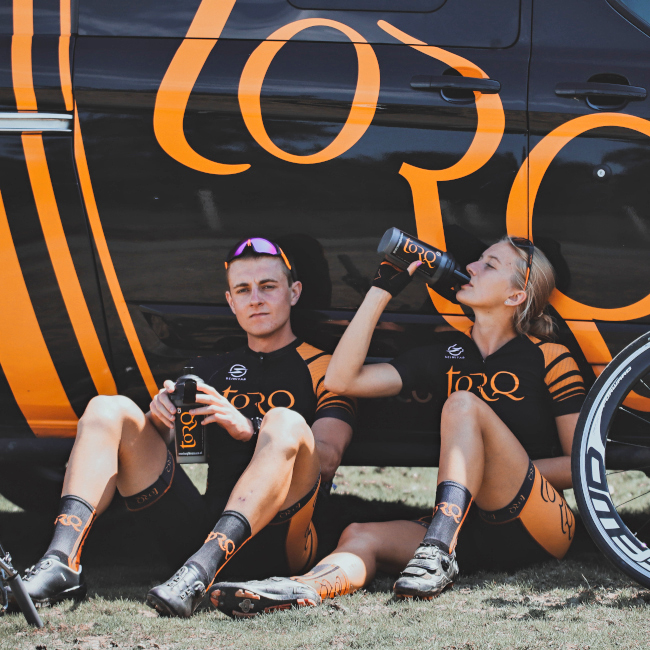
When approached methodically, recovery becomes a structured, intelligent process. It can elevate performance, reduce the risk of overtraining, and support consistency. The key lies in understanding how to nurture your body back to a state of readiness and resilience day after day.
Why Recovery Matters
The body is remarkably adaptive, but it needs support to rebuild after the strain of exercise. Whether you’re preparing for competition, generally completing a high-volume of cycling, or simply seeking to improve, the hours after your workout are as critical as the minutes spent doing it.
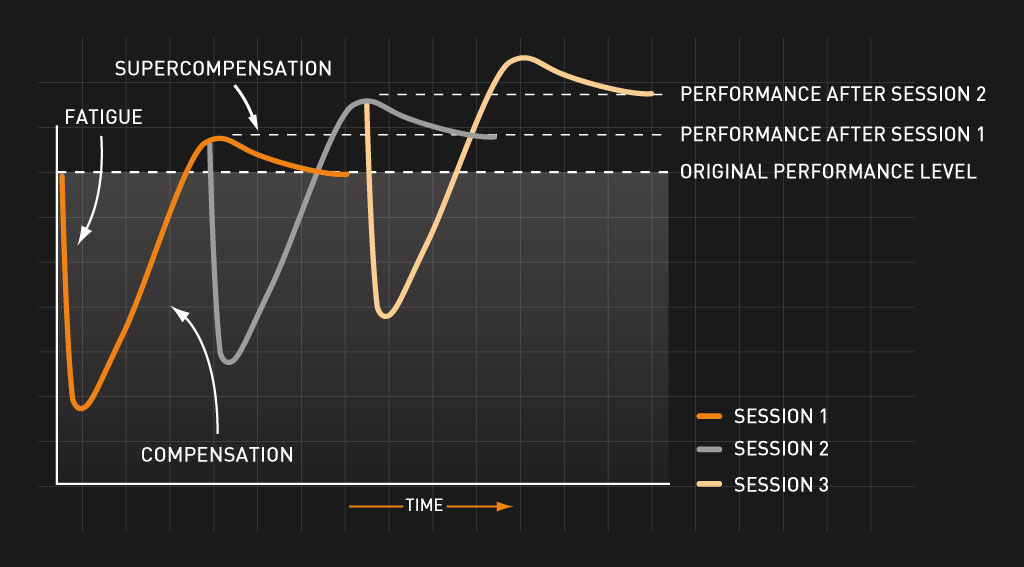
Training creates stress on the muscles, the cardiovascular system, and even the immune system. Recovery is your response: a purposeful strategy to restore balance and foster adaptation. When managed wisely, this process doesn’t just bring you back to baseline, it raises your fitness ceiling.
A Four-Phase Approach to Recovery
Rather than thinking of recovery as a single act (like a post-workout shake or a good night’s sleep) it’s more effective to view it as a four-phase system. Each stage builds on the last, scaling in depth depending on the intensity/volume of your training and overall goals.
Phase 1: Begin Recovery Whilst You Train
Surprisingly, recovery begins not after your workout, but during it. Taking in carbohydrates whilst exercising helps preserve your body’s internal fuel stores, specifically muscle and liver glycogen. This practice doesn’t just sustain performance; it also reduces muscle breakdown and dehydration, laying the foundation for faster recovery once the session ends. The more demanding the workout, the more important this in-exercise fuelling becomes.

Phase 2: The Critical 15-Minute Window
The first 15 minutes post-exercise are golden. During this short window, your body is primed to absorb nutrients and initiate repair. A well-constructed recovery nutrition strategy should address four key objectives: rehydration, refuelling, repair, and recharging.
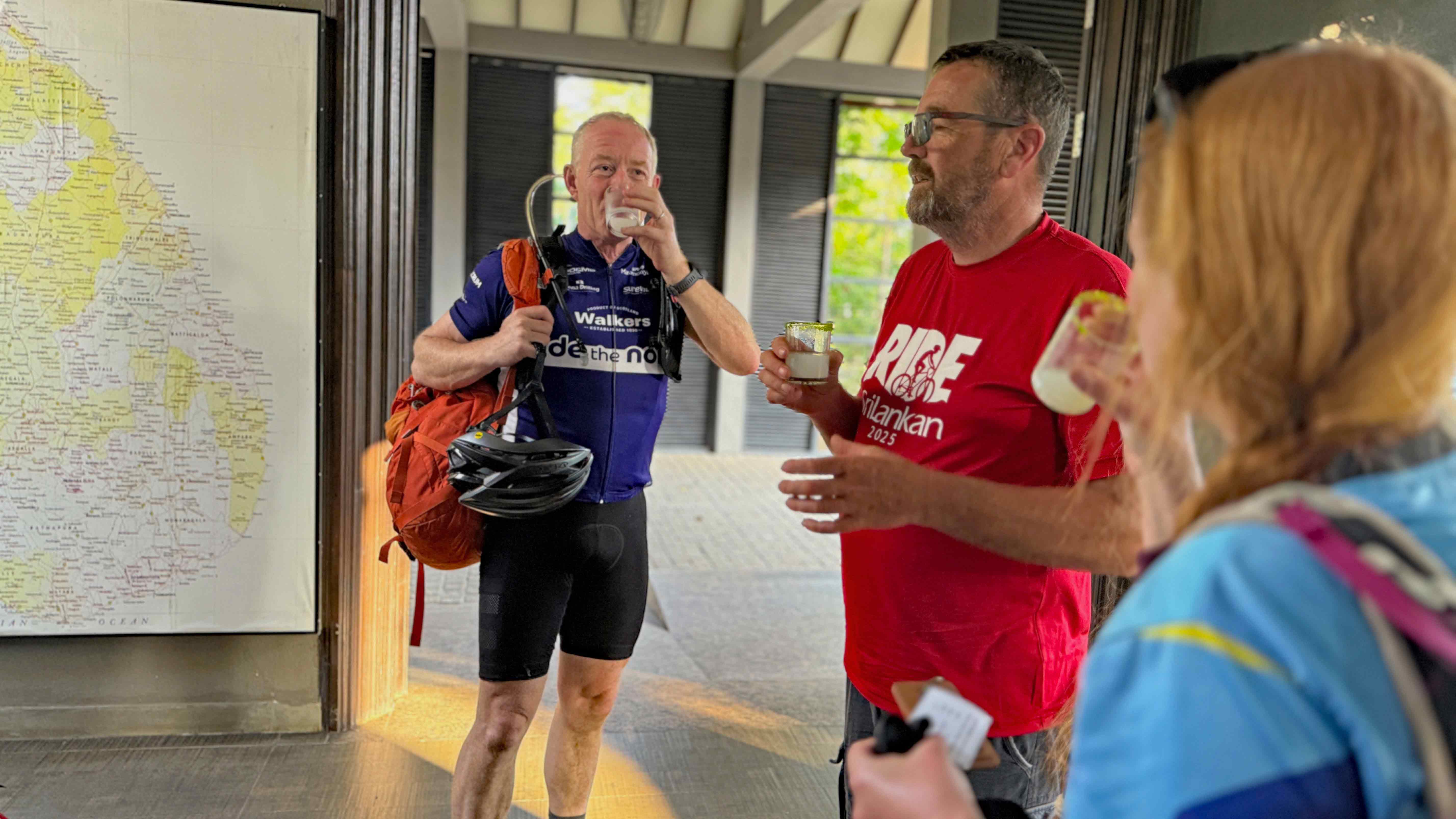
Rehydration involves replacing not just water, but also electrolytes, especially sodium, lost through sweating. Refuelling requires the replenishment of carbohydrates to restore glycogen levels. Repair is supported by fast-absorbing proteins like whey or pea protein, along with amino acids such as glutamine that protect muscle integrity and aid immune function. And recharging? That’s where compounds like D-Ribose come in, helping to rebuild cellular energy stores – we talk about this in more detail shortly.
This is not just about recovery, it’s about preparing your body to adapt and improve.
Phase 3: Carry Recovery into Your Daily Diet
When training becomes a regular part of your lifestyle, especially multiple sessions per week or per day, your nutritional habits must extend beyond individual workouts. At this stage, recovery is about reinforcing your dietary intake with meals and snacks that continue to support energy balance, muscular repair and immune health.
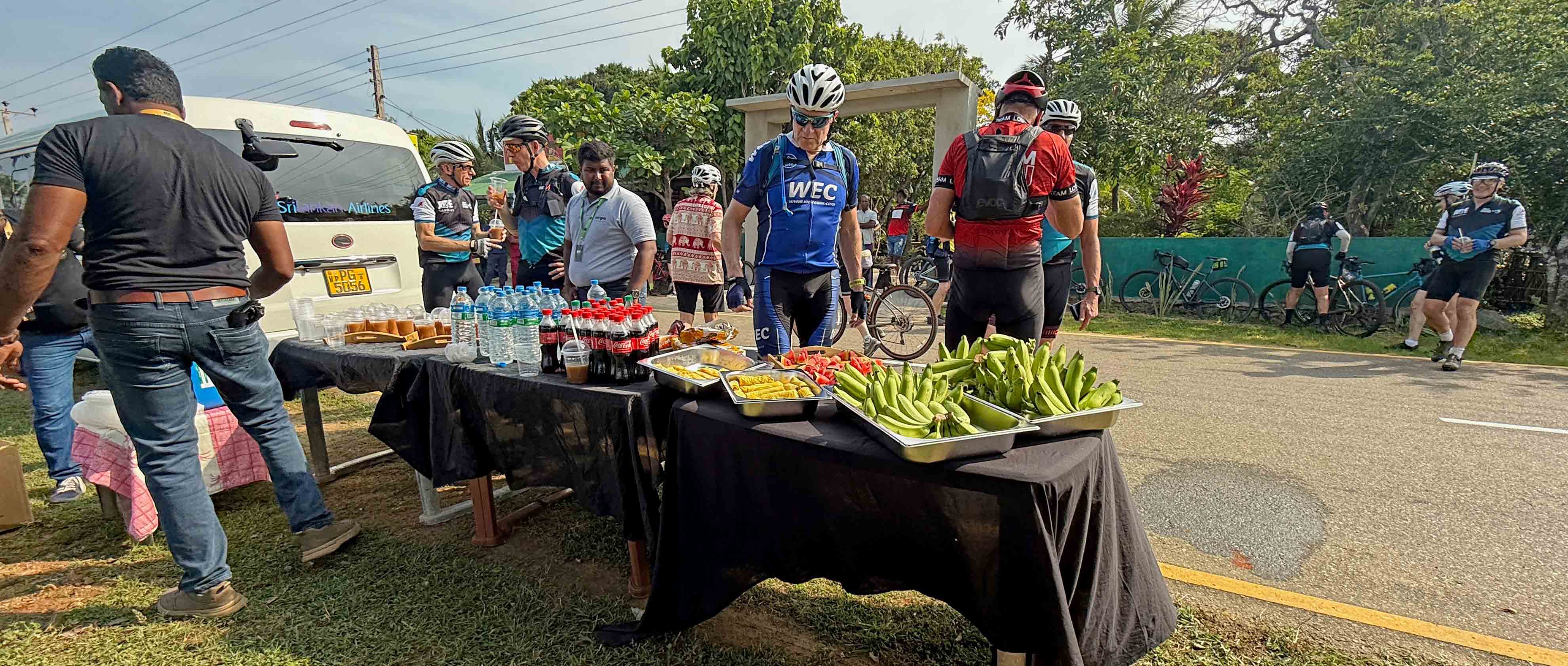
Whole-food carbohydrates and lean proteins should form the cornerstone of your meals. But there’s also a practical dimension: convenience. Nutrient-dense options like enriched breakfast cereals, rehydrated meals, or high-quality snack bars can make a significant difference when your schedule is packed. Strategic supplementation with unflavoured complex carbohydrates can also help you meet your energy needs without disrupting your usual eating patterns.
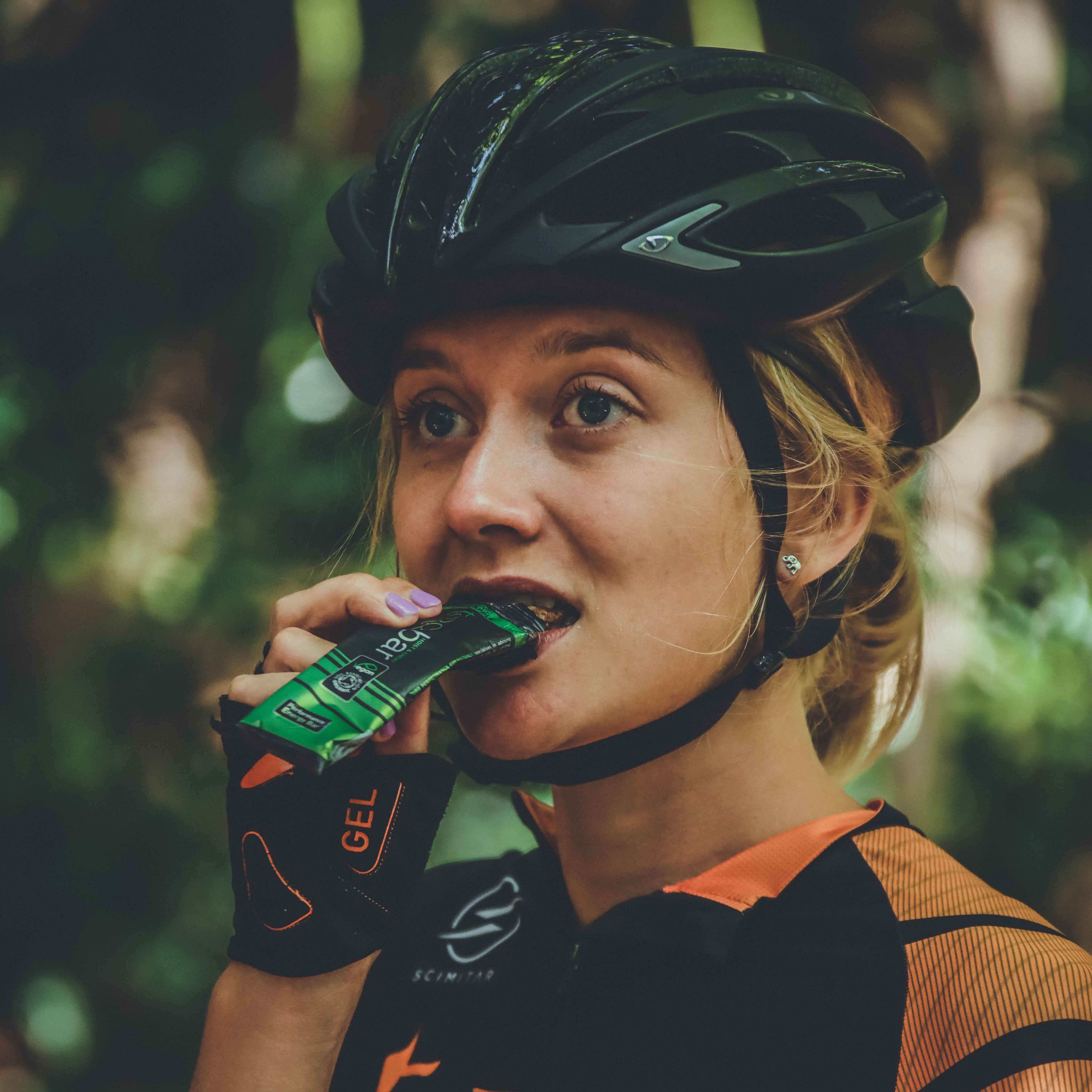
In this phase, the goal is consistency, not perfection. A steady flow of nutrients keeps your recovery humming in the background, allowing you to build fitness sustainably. As a rule of thumb, aim to factor-in 20-25g of protein every 4 to 5 hours. For more information on the benefits regularly phased protein intake, you might want to read the following article.
Phase 4: Supporting Recovery Under Pressure
This phase isn’t for everyone and shouldn’t replace a disciplined commitment to the three fundamental phases above – it’s the icing on the cake. In periods of intensive endurance exercise, such as training camps or heavy blocks of racing in competition season, your body demands more. This is when advanced supplementation strategies can make a difference. Specific compounds like branched chain amino acids, beta-alanine, HMB and Sodium Phosphate can help to support aerobic and muscular adaptation.
Beta-alanine helps delay the onset of lactic acid accumulation, enhancing your ability to sustain high-intensity efforts. HMB assists in limiting muscle breakdown while encouraging repair and regeneration and sodium phosphate increases the oxygen-carrying capacity of your blood, giving you an aerobic edge.
These nutrients don’t just accelerate recovery—they expand your training capacity. By supporting both the workload and the recovery from it, they help drive the kind of adaptations that turn consistent effort into competitive performance. For more information on these specific compounds, do your research, however a useful summary can be found on the TORQ Website as they have a product formulated using them all.
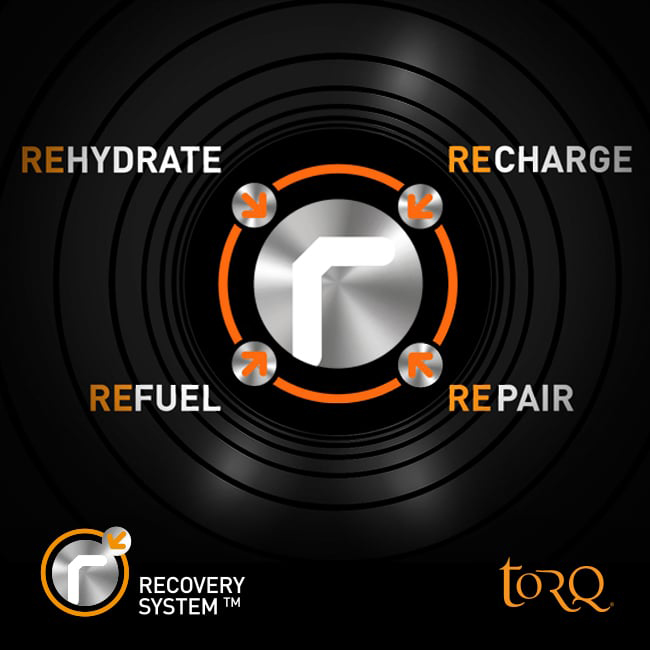
The “Four Rs” of Effective Recovery
At the heart of this structured approach are four simple, interlocking principles: Rehydrate, Refuel, Repair, and Recharge.
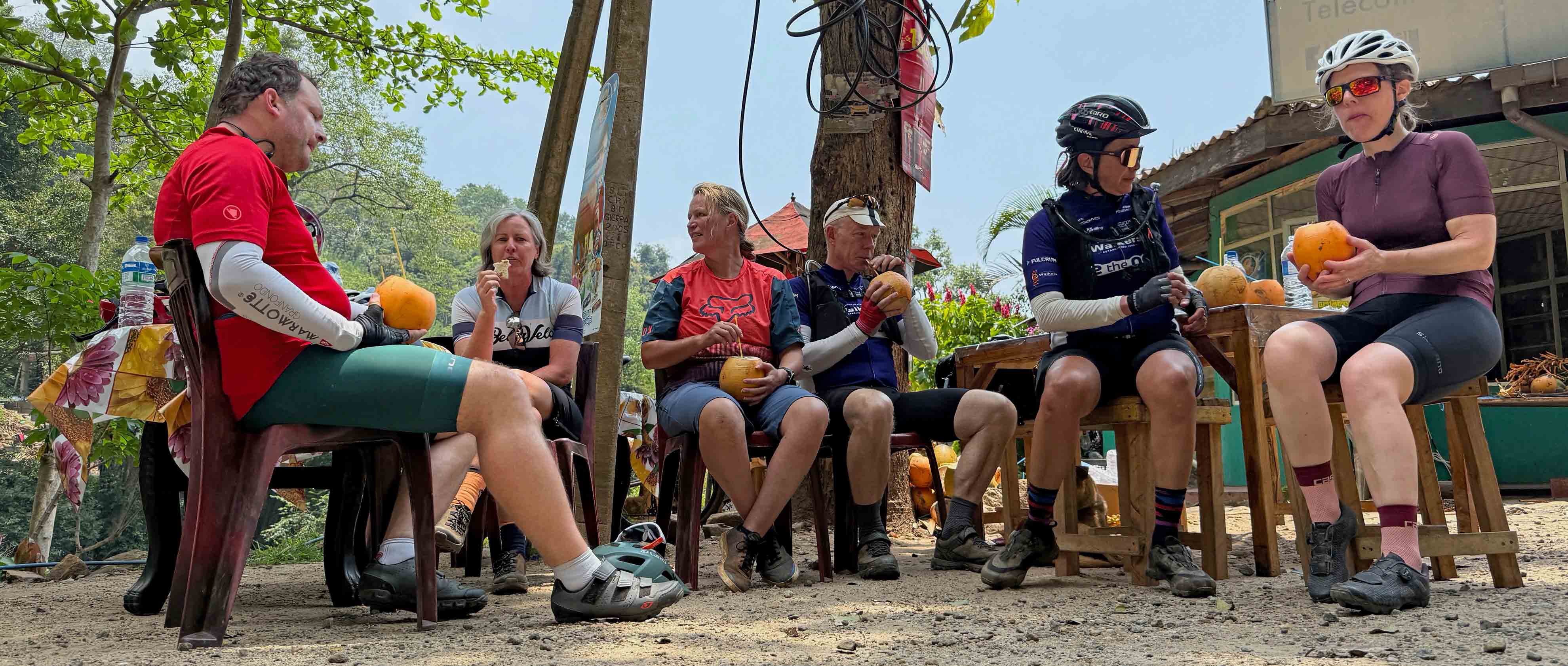
Rehydration is foundational. Without restoring fluids and electrolytes lost through sweating, all other recovery mechanisms are compromised. Refuelling focuses on replacing carbohydrates, which are essential for glycogen synthesis and long-term energy. Repair emphasises protein intake to stimulate muscle rebuilding. Recharging, often overlooked, involves the restoration of cellular energy pools using a supplement like D-Ribose*, ensuring your muscles have the biochemical power they need to perform again.
Together, these principles form a virtuous cycle. Each supports the others, and skipping one weakens the chain. Intelligent recovery involves balancing all four, every time.
*It’s important to note that whilst studies struggle to demonstrate that supplementation with D-Ribose directly enhances athletic performance, the link between supplementation and cellular recovery - the body returning to homeostasis/normality more swiftly - is proven, and this is where the benefit of supplementation lies. If you can exercise more often and recover quicker, you’ll get fitter faster.
Adaptation: The Ultimate Goal
Recovery isn’t an end in and of itself, it’s the pathway to adaptation. Think of the training cycle in three stages: stress, recovery, and adaptation. The stress of exercise initiates a need for repair, recovery allows the body to meet that need and adaptation occurs when the body rebuilds stronger, faster, and with more resilience.
Without adequate recovery, that third phase stalls. Worse still, fatigue accumulates, and performance declines. This is the paradox of training: doing more only helps if your body has the capacity to absorb the load and strategic recovery makes that possible.
This is where training periodisation becomes relevant. Some athletes opt for a steady rhythm (work followed by rest) as indicated in the graph earlier on in the article, whilst others cluster harder sessions together, relying on concentrated recovery to promote deeper adaptations.
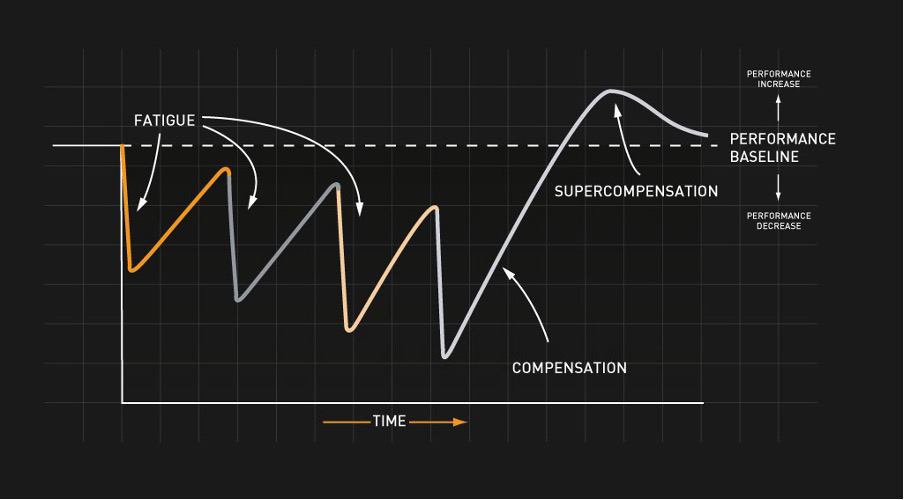
Whichever approach you choose, the takeaway is the same: recovery must be planned, not left to chance.
If you want to get into the nuts and bolts of periodising your training and peaking for a competition, you should find these articles useful:
The Overlooked Factor: Immune Health
Recovery isn’t limited to muscles. The immune system also bears the burden of training, especially during extended or intense sessions. That “window of vulnerability” post-exercise is a real physiological phenomenon, where immune defences are temporarily suppressed.
Nutritional strategies play a crucial role here, too. Carbohydrates help maintain immune surveillance, while protein and the amino acid glutamine support immune cell function. Outside of food, targeted supplementation with vitamin D and zinc can reinforce everyday immune resilience, especially during winter or heavy training periods.
At times of high training load or increased exposure to pathogens, such as travel or competition, short-term use of vitamin C, glutamine, and echinacea may provide additional support. By protecting your immune health, you also protect the consistency of your training and by extension, your long-term performance.
We will be talking about immune health in greater detail in a future article as autumn and ‘bug season’ approaches.
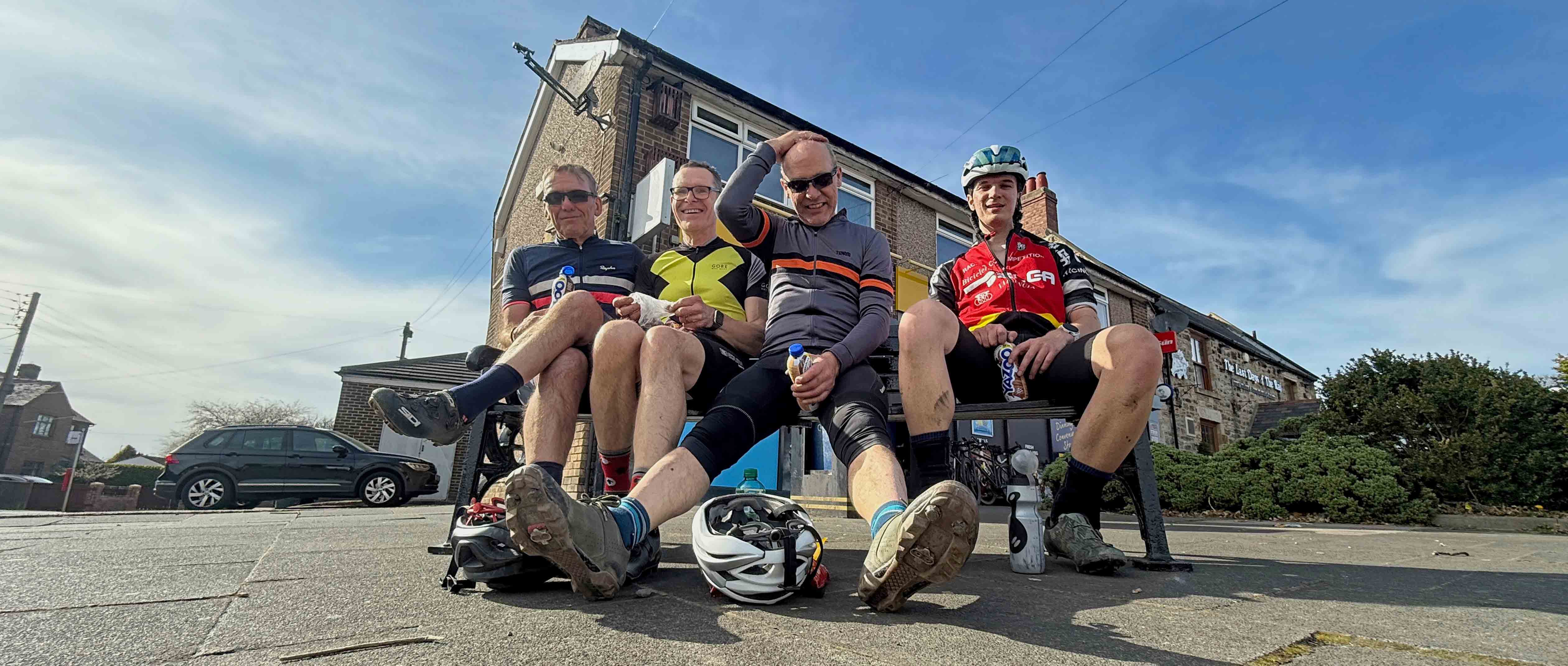
Recovery as a System, Not a Shortcut
What separates sustainable athletes from short-lived success isn’t just talent or work ethic, it’s strategy. And recovery is a strategic domain. Done right, it transforms fatigue into adaptation and effort into resilience. So rather than viewing recovery as a reaction, treat it as a system. Begin by fuelling your bike rides, respond swiftly post-exercise with a comprehensive recovery drink or meal and reinforce your diet throughout the day with nutrient-dense options. And when demands escalate, support your body with the advanced tools it needs to thrive.
This is what modern performance requires — not just hard work, but intelligent work.